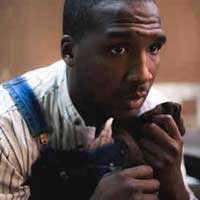



In his own youth, Solly Two Kings (given conviction’s casual edge by James A. The real protagonist might be given several names: Vision, Hope, Courage, Redemption – qualities variously embodied in two characters, a man in late middle-age who knew slavery first hand and a young man who has recently suffered its bitter legacy in the deep South. Dixon affixes Ester as the play’s essential anchor, though “Gem of the Ocean” is not about her. Lisa Gaye Dixon is Goodman’s presiding Aunt Ester, as assured and perceptive as she is wry and droll. She is respected as guru, shaman, truth-sayer and, above all else, holder of the key to the City of Bones, a mythic place, or rather a place in the mind, where sins are purged and broken souls made whole again. “Gem of the Ocean,” like most of Wilson’s cycle, takes place in Pittsburgh’s Hill District, in the home of Aunt Ester, a community matriarch of indeterminate age but said to be 285 years old. Taken as a whole, the cycle is unsurpassed as a body of work by an American playwright the subtle rigor of Wilson’s plays combined with their unfailing lyricism might be summed up as Shakespeare meets Tennessee Williams. “Gem of the Ocean,” framed in the 1900s with the legacy of slavery still very much in the room, was written next to last. It’s something of a theater geeks parlor game to recite which play pertains to which decade and then, for the Wilson devotee championship, to toss off the order in which they were written. While the 10 plays of the Pittsburgh Cycle are set in specific decades, they were not written in the chronology they invoke. August WIlson came to Chicago for the premiere of ‘Gem of the Ocean’ in 2003.


 0 kommentar(er)
0 kommentar(er)
